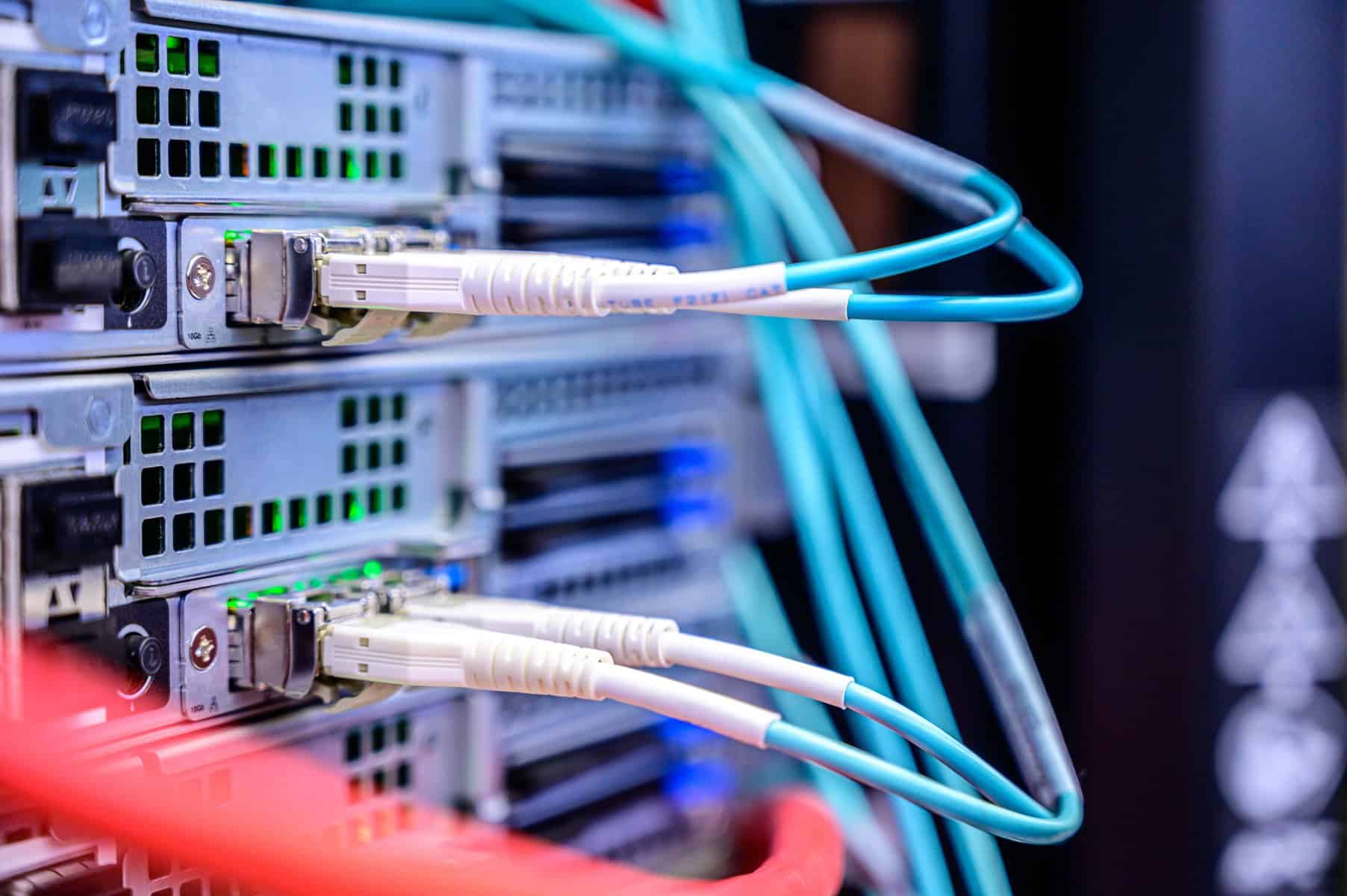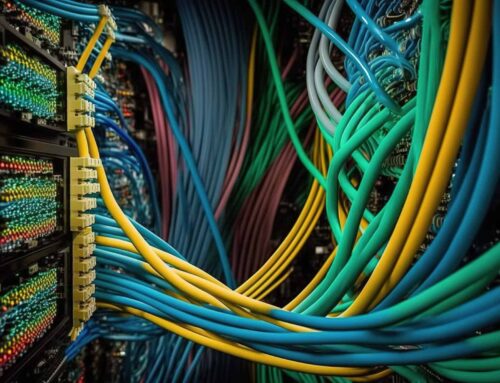The Basics Of Structured Cabling

What Is Structured Cabling?
Structured cabling is a family of wires designed to transmit information over distances spanning a few feet all the way up to hundreds of meters or even kilometers. The cables sometimes use low voltage electrical signals, other times using high-frequency pulses of light. Structured cables come in a wide variety of application-specific configurations, including different cores (copper or fiber optic being the most common), shielding layers, insulation layers, and termination styles (a.k.a. “Plug types”).
What Are The Components Of A Structured Cabling System?
Every modern network for connecting computers uses structured cable and structured cable equipment such as patch panels, servers, switches, and repeaters to deliver high-speed data connections to every computer or “node” in the network. A structured cable system is the combination of equipment and infrastructure that comprises a LAN or local area network. LANs can span a single floor of a building or a sprawling campus.
Entrance Facility
This is the first point of interest in the technological nervous system that is a structured cable network. The vast majority of businesses and organizations rely on an internet service provider (ISP) to connect them to the worldwide web. The entrance facility is where that primary cable enters the building and branches out to the various equipment rooms.
Equipment Rooms
Equipment rooms serve as hubs within the structured cable system. They house servers, switches, patch panels, and other pieces of technology infrastructure. Structured cable enters the equipment room where it usually terminates into a switch or patch panel. Then, a new section of structured cable continues to the next destination, which is most often backbone cabling or horizontal cabling.
Backbone Cabling
If a structured cable system is a nervous system, the backbone cabling sub-system is similar to a human backbone. The main cables that connect to each equipment or telecommunications room are referred to as backbone cabling.
Commonly backbone cabling runs vertically between floors, but it can run horizontally as well. In any case, backbone cabling connects the various equipment hubs of the network. Backbone cabling is distinct from horizontal cabling (even if the backbone cable is running in a physically horizontal orientation).
Horizontal Cabling
Horizontal cabling stems from the equipment rooms and typically runs to the telecommunications rooms that serve various work areas within a floor or region of a building. Although the name is vague enough to be confused with any cable routed in a horizontal orientation, “horizontal cable” is a distinct sub-system within the larger structured cable system.
Telecommunication Room
“Teleco” rooms, as they are often called, receive horizontal cabling from the equipment rooms so that connections can be redistributed through a nearby work area. A telecommunication room is similar to an equipment room – they house infrastructure equipment for the network as a whole. Telecommunication rooms are typically smaller than equipment rooms and serve as a relay or waypoint on the way to and from the equipment room.
Work Area
The work area is where structured cables terminate at individual workstations or routers so that people can connect to the internet with their desktop computer or laptop. In the nervous system analogy, these are like the hands, where work gets done and the nerves don’t continue any farther.
Types Of Cabling Used In Structured Cabling
As mentioned earlier, there are different types of structured cables that can carry information signals. There isn’t a clear “best option,” of all the types. Due to the performance characteristics of each type, you want to match the right cable with the right job and your budget.
Fiber Optic Cable
Fiber optic cables use specialized glass or plastic cores, to form single mode (“single strand”) or multi-mode (“multi-strand”) cables. Fiber optic cables offer the fastest speeds and highest bandwidth as well as excellent signal clarity over long distances, including resistance to electrical interference.
The downside of fiber optic structured cable is that it requires specialized infrastructure that can seem expensive compared to copper infrastructure. You may not even need the speed and high capacity of fiber optic for your business, in which case splashing out for a fiber optic structured cable system would be a waste of money.
Copper Twisted Pair
By far the most common type of structured cable, copper cable technology goes back to Alexander Graham Bell and the invention of the telephone. It is a proven technology that has at least 8 generations or iterations. Copper twisted pair cable is often called “CAT” followed by a number and perhaps a letter, such as “CAT 6a,” which also happens to be one of the most popular cable types for modern networks. Copper twisted pair cables come with a variety of shielding and insulation options.
Coaxial
From a performance perspective, coaxial cable is newer than twisted-pair cable, older than fiber optic cable, and sits somewhere in between the two for performance. Many internet service providers still use coaxial cable to deliver “cable internet” to residences. It carries signals well over very long distances without requiring some of the expensive infrastructure that fiber optic cable does.
Coaxial cable was widely used for delivering cable television service to residences, so it helps that ISPs can piggyback on a cable network that was originally installed for a different purpose. Coaxial cable does not perform as well as fiber optic or twisted pair cables when used within a LAN. That said, it fits an important niche in the larger ecosystem of delivering internet to homes and businesses.
Common Uses Of Structured Cabling
Any modern business will rely on structured cabling for multiple functions. For example, structured cabling is connects data centers and computers to the network. In the conference room, they might provide the connection for the VoiP phone, audio system, and the projector. Most modern commercial security systems also rely on structured cabling to stay connected.
Tips For Managing A Structured Cabling Installation Project
In the early days of structured cable systems, computers and infrastructure were tied together in a method we now call “point-to-point.” This approach became hopelessly disorganized beyond small-scale projects and was infuriating to troubleshoot, upgrade, or repair.
The modern structured cable system or network should be high-performing for users and straightforward for network administrators and IT teams. If you’re unsure what type of network you’re using, then it’s time to call in a partner that can help. An experienced IT consulting partner can help identify your business needs and match them with a structured cabling system that will meet those needs without wrecking your budget.
About i.e.Smart Systems
i.e.Smart Systems is a Houston, TX based technology integration partner that specializes in design and installation of audio/visual technology and structured cabling. For more than three decades, our team of in-house experts has partnered with business owners, architectural firms, general contractors, construction managers, real estate developers, and designers in the Houston market, to deliver reliable, scalable solutions that align with their unique goals.




